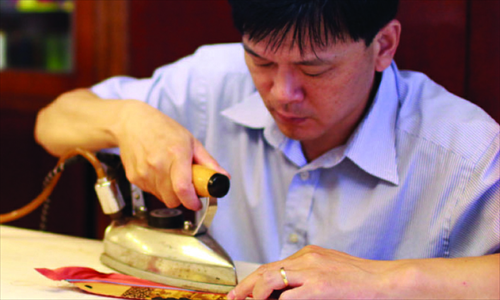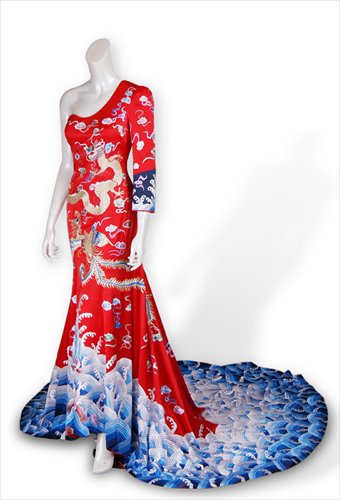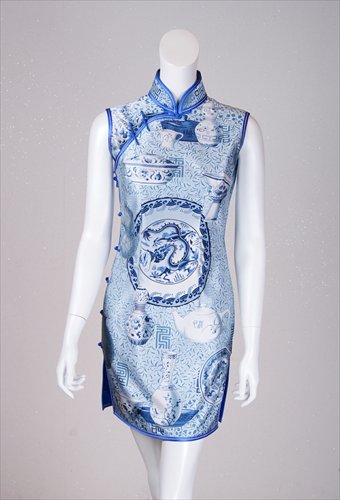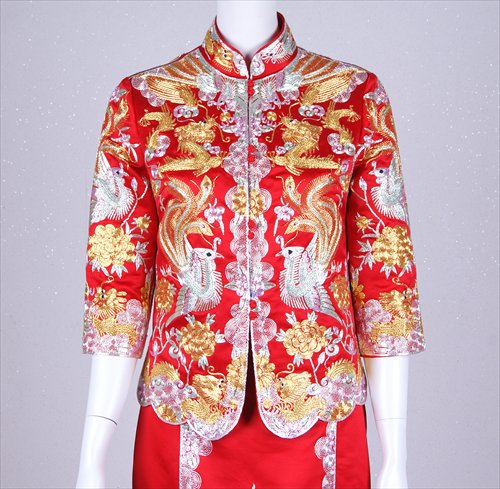Tailoring tradition
Editor's Note
According to UNESCO's definition, an "intangible cultural heritage" includes traditions or living expressions inherited from our ancestors and passed on to our descendants, such as oral traditions, performing arts, social practices, rituals, festive events, knowledge and practices concerning nature and the universe or the knowledge and skills to produce traditional crafts. It has to be traditional, contemporary and living at the same time, inclusive, representative, and community-based. The safeguarding of intangible cultural heritage is an important factor in maintaining cultural diversity in the face of growing globalization. An understanding of the intangible cultural heritage of different communities helps with intercultural dialogue, and encourages mutual respect for other ways of life.
The Shanghai Municipal Government has designated 157 traditions as Shanghai's intangible cultural heritages.
The Global Times Metro Shanghai culture page will introduce one intangible culture heritage and interview their current inheritors every month.

Xu Yongliang, a third-generation maker of Longfeng qipao Photos: Courtesy of Shanghai Longfeng Chinese-style Garment Co, Ltd
A group of young models, both Chinese and foreign, dressed in exquisite Shanghai-style Longfeng qipao (also known by the Cantonese word, cheongsam), hit the runway of the 2009 Shanghai International Fashion Culture Festival. The models' curvy silhouettes and elegant movements, which were accentuated by the ethereal cheongsam, impressed the audience so much so that many of them voted Longfeng qipao as their favorite brand showcased during the fashion festival.
The artisan who designed these colorful and delicate dresses is Xu Yongliang, a third-generation maker of Longfeng cheongsam. "Longfeng qipao has long been regarded as the essence of Shanghai-style qipao for its traditional and authentic dressmaking techniques," Xu, a Jiangsu native, told the Global Times at the garment company's workshop in downtown Jing'an district.
The history of Longfeng qipao can be traced back to the late 1930s when Zhu Linqing, an experienced tailor, opened Zhu Shunxing clothing shop in Shanghai. Zhu mastered the traditional Chinese sewing crafts and integrated his skills into distinctive Shanghai-style, East-meets-West cheongsam-making.
After the founding of the People's Republic of China in 1949, Zhu merged his business with four other leading clothing shops in town to form Shanghai Longfeng Chinese-style Garment Store specializing in customized cheongsams and other clothes.

Longfeng qipao
"The most extraordinary feature of Longfeng qipao lies in its high-quality, handmade tailoring. For example, we take more than 30 measurements of our customers to make sure that the dress is perfectly fitted," Xu explained.
The time-honored needlecraft is also strictly applied in making a Longfeng cheongsam. Only the most refined fabrics, such as silk, brocade and velvet, are used to create a sense of lightness, smoothness and elegance, according to Xu.
Longfeng refers to the dragon and the phoenix, two creatures in Chinese mythology that symbolize auspiciousness and which are typically featured in the brand's qipao designs. The peony, considered as China's national flower, symbolic of good luck and fortune, is another popular motif, Xu added.
Born in 1965, Xu developed a keen interest in Chinese-style garment making at a tender age under the influence of his father, who worked for Shanghai Longfeng clothing store. After training at a Shanghai fashion design vocational school for three years, Xu followed in his father's footsteps and started his apprenticeship with master Gui Shunyuan, the second-generation successor of Longfeng cheongsam.
"It took me a solid decade to finish my apprenticeship - Chinese-style tailoring, especially qipao making, is such an elaborate handicraft that requires years of study and arduous practice to get the know-how," Xu said.

Longfeng qipao
He gave an example of dealing with different materials. "There are dozens of fabrics that are suitable for Chinese-style dressmaking. However, each kind of cloth has its own texture and characteristics. To make a dress elegant-looking and perfectly formfitting, a seamster has to know about different fabrics well and use different tailoring techniques to deal with them."
Another skill that Xu excels in is making pankou (Chinese knot buttons), an offbeat accessory for Longfeng cheongsam. Aspiring to add a trendy twist into traditional Longfeng qipao, Xu fashions artistic and sophisticated Chinese knot buttons.
The nearly 100 kinds of colorful and intricate Chinese knot buttons that Xu has created over the past few years vary in design from traditional animal and floral patterns to eclectic geometric figures and Chinese characters.
"Given the artistic features and complicated techniques that are involved in making pankou, it would usually take an artisan a couple of days to finish this ornamental work for a single qipao," Xu said.
He added that a hand-sewn cheongsam, embellished with embroidery, pankou and other accessories, will usually take a whole week to make. "And a dress has to be done by several experienced tailors," Xu added.
Because of the high-quality raw materials and refined, laborious workmanship involved, Longfeng cheongsam don't come cheap. The garments that are on display at the Shanghai Longfeng flagship store on bustling Shaanxi Road North are priced from 2,500 yuan ($412) to 100,000 yuan, depending on fabric, style and tailoring.
"To buy a bespoke Longfeng qipao, customers are invited to choose their style and pattern at our flagship store first, where they will be meticulously measured by our staff. Then our sewers will start working in our workshop, which is only a few blocks away from our store. Customers are also asked to try on their ready-to-wear dress before we 'seam the deal,'" Xu explained.

Longfeng qipao
The workshop, which employs about 10 workers, produces nearly 1,000 elegant Longfeng cheongsams every year, according to Xu. "Most of our customers nowadays are brides and their female family members who will wear our dresses on their big day and other auspicious occasions."
Longfeng cheongsam are also popular with celebrities and dignitaries from both China and abroad, among them socialites, film stars and political figures.
However, the heyday for Longfeng cheongsam is over, according to Xu. "The golden age of Longfeng qipao was between 1996 and 1998 when we had to customize more than 1,500 dresses on a yearly basis. Yet, with the rise of costs and the growing competition in the Chinese-style garment industry, we've seen a decline in the number of our customers," he said.
"Fortunately, we can still manage to make ends meet and survive thanks to the support of our city government," Xu concluded. Longfeng qipao was listed as a city-level and national-level intangible cultural heritage in 2007 and 2009 respectively.